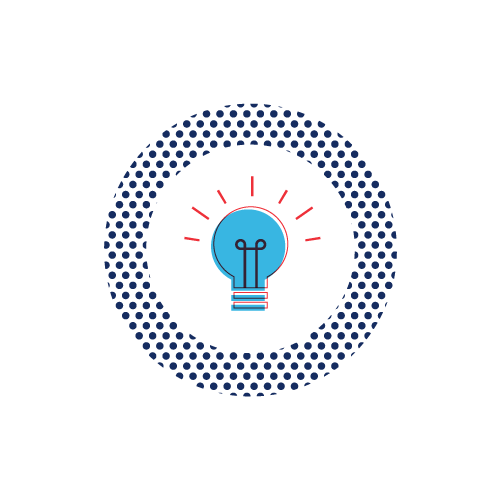For B2B science marketers, lead generation efforts are the primary source for generating quality leads for the sales pipeline. And now, with the current COVID-19 pandemic’s effects on events and economic infrastructures, the need for sales-ready leads is more important than ever before.
Whether it is webinars, whitepapers or other lead generation tactics, having a plan is essential for evaluating success. However, your strategy needs to be broken down into distinct phases to ensure you’re getting the most out of your investment. To help you build a plan that will be successful, we’ve created a checklist for each step of a full lead generation program to help keep you on track. We dive in to the Pre, During and Post-Campaign items below.
Pre-Campaign Items
No surprise that this is where you get started. You and your team should be thinking about the who, what, when, where and most importantly, the why. The answers to these questions will be your guide throughout your entire campaign.

✔︎ Define your goals and target audience.
Who is it that you’re trying to reach? What primary and secondary actions do you want them to take? A primary action would be registering for the webinar, while a secondary action may be directing them to your website to learn more information.
✔︎ Plan the content and topic you’d like to focus on.
Think about it from your prospect’s perspective, not a marketer’s perspective. Make sure your content is educational in nature and not commercial. Choose a webinar topic that promotes thought-leadership, applications and industry knowledge.
✔︎ Identify your subject matter experts who can participate in webinars, or be quoted in a whitepaper.
Be realistic here: Can they dedicate the time required to contribute content? If working on a campaign with a publisher, offer up suggestions for subject matter experts. But before you do, it’s important to take a hard look at the diversity of the speakers and experts your company is promoting. Are they representative of the community? Are you spotlighting all voices in your group? While this article from Harvard Business Review focuses on conferences panels, the same advice applies here.
In addition, be ready to share your branding guidelines and any images you think will be pertinent for the project.

✔︎ Think through what you want to learn from your audience.
Are you asking qualifier questions on your registration pages? Are they the right type of questions that can help the sales team identify your top sales-ready leads?
✔︎ Solidify your timeline around your entire campaign.
Generally lead generation tactics, like webinars and custom whitepapers, can take anywhere up to 8-10 weeks of development. If you need to set up something fast, consider sponsored quizzes or promoting content you already have (like an existing webinar) that you can quickly repurpose into a new asset (like a whitepaper.) Consult with your publishing partner to see what your options are.
✔︎ Define your follow-up plan.
What are you going to do to nurture newly acquired contacts? What will your sales team do with them? Do you have a marketing automation or CRM tool that you need to funnel leads to? What content marketing and sales materials does your sales team have to follow up with? Make sure you are utilizing your leads to the fullest extent by having a clear plan before your campaign begins.
To-do List During the Campaign
After booking a lead generation product, it’s easy to move on to the next item you need to get out the door. But there are a few important elements that will still require your attention, even if you’re working with a publisher on your lead generation program.
✔︎ Amplification
Leverage your publisher’s social channels and your own to amplify the message and extend the reach of your campaign. Lead generation programs aren’t just about getting sign-ups: They are also powerful brand awareness tools. You’re positioning your company as the go-to resource to help chemists do their jobs. So you first need to make sure your community knows the ways in which you’re helping.
✔︎ Progression
Check in with your partners on how registrations are coming along. Promotional assets, like emails and landing pages, can easily be changed if you’re not seeing conversions. Even the slightest changes to the subject line and/or copy of your email could help boost your numbers. With that said, you do need to ensure you’re being true to the content that will be presented. No clickbait!
✔︎ Pace
Keep track of time. When working with a publisher, make sure you’ve done your part by submitting materials on time and approving items to avoid unnecessary delays. This is also a good time to check in with your internal stakeholders and other divisions in your company to let them know how your campaign is going. Product managers for other product lines may not even be aware your team is creating relevant content, especially at large companies.
✔︎ Preparation
If you’re doing a webinar, check in with your speakers and make sure they are preparing their slides for the day of the webinar. Give them realistic deadlines so you’re not running against the clock. Also think about ways to keep your audience engaged throughout the webinar, by adding in poll questions and additional resources. If you’re working with a publisher, they should have resources for all of these items.
Post Campaign Items
Your campaign is “over”, which really only means the launch has ended. The analysis has now begun. What should you be looking for, and what additional opportunities can you find?
✔︎ Connect your leads
Make sure your sales team has access to these new contacts. This sounds like an obvious statement, but disconnect between sales and marketing is a real thing at many companies. Your pre-campaign work here will guide you through your post-campaign follow-up, but don’t forget to check in with your sales team now. What are they hearing from these contacts?
✔︎ Nurture
The strongest lead generation programs have multiple touch points, and like the point above, the pre-campaign checklist should have already set you up to tackle this category. But now that your main event is over, you’ve seen it in action and how the audience has responded, you can think about additional content you could provide to your target audience. Were there questions the audience asked that you couldn’t answer live during the webinar? Or information that seemed to resonate with attendees? Turn that information into an infographic or custom quiz. A webinar itself could even be turned into a whitepaper, which you can use to gain even more leads. In short, think about extending the shelf life of your content and publish it in different mediums.
✔︎ Build even more amplification
Have you posted the content on your website? Are you running ads for the on-demand version? Increase discoverability of your content by posting online and promoting again on social. Posting content that was done in partnership with a publisher can also help enhance credibility.

Time to put this checklist to use.
Over the last month, science marketers have been asked to shift strategies in light of the current crisis – with more focus towards lead generation activities to counter the impact of cancelled events. You’re not alone in figuring all this out.
Here at C&EN Media Group, we’re working with marketers to help navigate this time with proven solutions that will help get you the most for your investment. Our Lead Generation Playbook is another great starting point that walks you through strategies, case studies, and programs we offer. We hope these resources help you be best prepared for the campaigns you’ll be running in the coming months.
Have a question? Ask us at cenmediagroup@acs.org or contact us here.


















